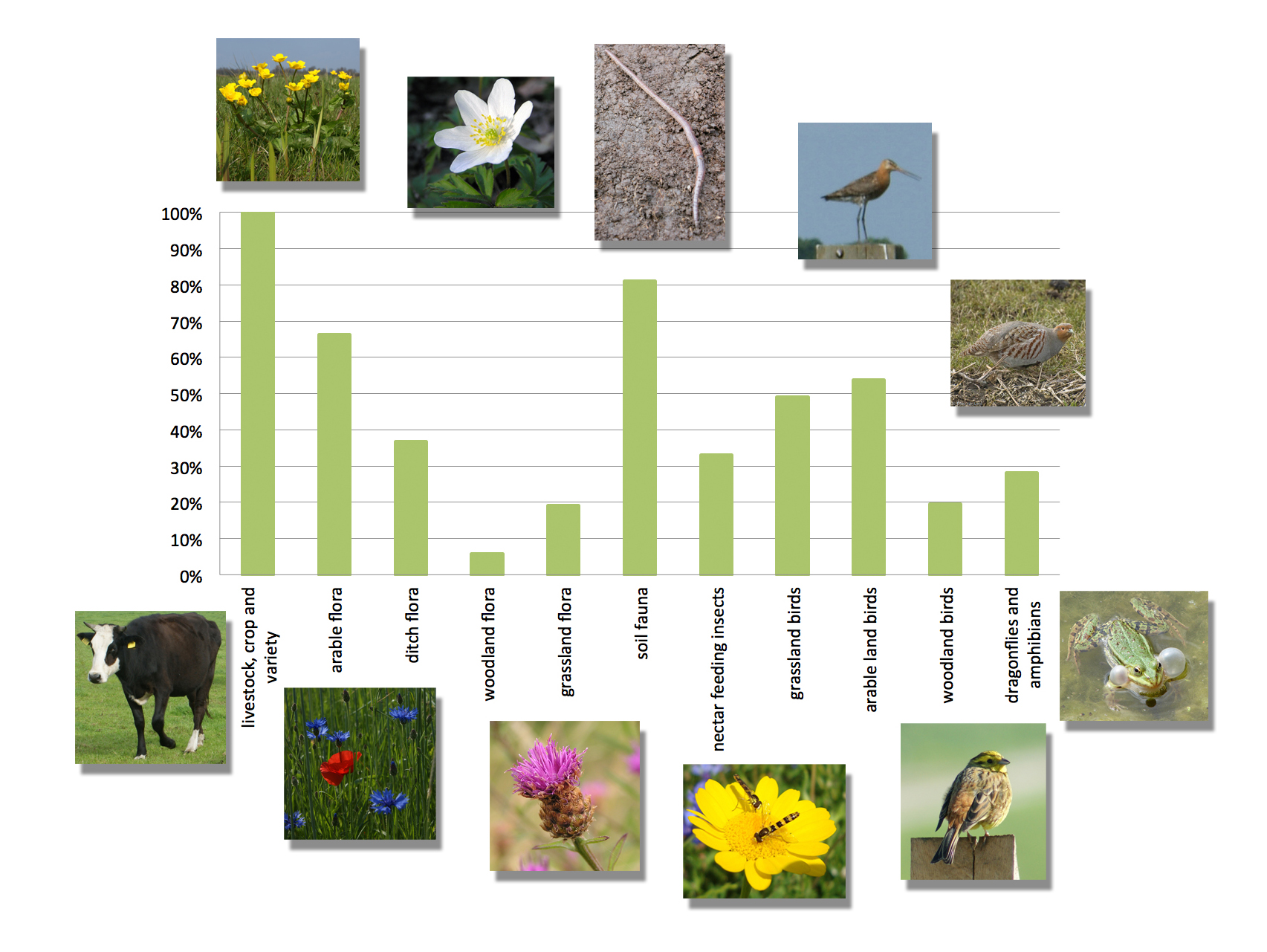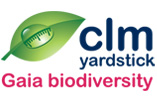GAIA biodiversity yardstick
As a farmer you can use the GAIA biodiversity yardstick (a free internet tool) to get an idea of the on-farm biodiversity. The yardstick makes biodiversity measurable and comparable (with benchmarks). The biodiversity yardstick consists of 40 questions on 6 themes.
- Crop and animal varieties used
- General management applied with biodiversity benefits (crop protection, nutrient and soil management)
- Productive areas under targeted nature management (extensive cropping, postponed mowing, etcetera)
- Area and management of non-productive elements in the field (water courses, hedgerows, etcetera)
- Management of natural reserves
- Green area and management on the farmyard
In most cases you can click a button next a set of possible answers. The answers define scores for the 6 biodiversity themes and scores for their (positive) effect on 11 categories of flora and fauna relevant for agriculture areas. Besides this, surface areas of nature elements on the farm are shown. These surfaces don’t influence the mentioned scores.
Gaia biodiversity yardstick temporarily unavailable due to an update from January 5 onwards
The e Gaia yardstick website will be renewed in 2025. The website will be unavailable from January 2025 due to this update. As a result the yardstick cannot be filled in, in the beginning of 2025.
We expect that the website will be available again no later than July 1. A new manual and group code will then also be added. In the meantime, if you have any questions about the Gaia yardstick, please contact Alice Blok from CLM (contact details below). We will announce it on the website, once the yardstick is available again.

Getting started
To enter the Gaia biodiversity yardstick, you need to register. A password will be generated automatically and sent to you through email. This password will not only protect your data but you will be also able to adjust your data anytime.
After registration you can record your farm data in approximate 20 minutes time.
When you have finished a form, you should click the button “save form”. It is possible to stop recording after clicking “save form” and to continue recording at any later time.
Once completely recorded, the programme will calculate your scores. You may print your score charts. Your score will become available to CLM as anonymous result and may be used in general benchmarks. CLM will never publish individuals scores without permission of the concerning farm.
Please check the manual before starting.
More information

The Gaia tool is being set up as mother system, from which more specific instruments can be further developed. Targeted at particular countries, regions or crop systems. Hence the tool's name Gaia (mother earth). The prototype is being developed for the Netherlands, using species groups and management practices that are typical for a relatively intensive type of dairy, arable and vegetable farming in Northwest Europe. The prototype can therefore be readily applied in the Netherlands. Minor additions will make it applicable in other countries like Germany, Denmark and Belgium. A further step could be the enhancement of the tool for other pro
duction systems. This would require a broadening of the possible measures (varieties/breeds, management) and output (species groups). One remaining limitation, however, is the unsuitability of the tool for very extensive systems, where farmland and nature areas are hard to distinguish. In other words: Gaia is made for systems aimed primarily at agricultural production.
See the latest news for recent developments.
Also see an example of a poster with individual results (pdf) related to group results as can be procuded bij CLM.
Read or download general information about the yardstick and the application (pdf)
For questions and remarks
Please contact CLM
Alice Blok
0031 345 470 723
[email protected]
Copyright & liability
The data of the GAIA biodiversity yardstick are property of CLM, and CLM has full copyrights. It is prohibited to apply (parts of) the GAIA biodiversity yardstick for any other use than for own use, and to reproduce or to save (parts of) the GAIA biodiversity yardstick in an electronic system without asking permission of the owner.
CLM does all it can to keep the information right and up to date. CLM is not responsible for possible negative results or damage that can occur as an effect of the use of the information of the yardstick.






